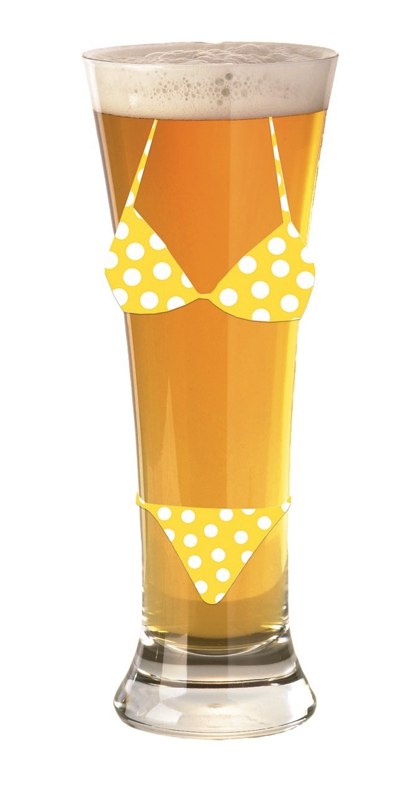If you love the ubiquity of the crisp, refreshing pale lager, never more than a pop-top’s distance away from Springfield or the Serengeti, you can thank the brewers of Pilsen, who, in 1842, created what would go on to become the world’s most popular beer style. If, on the other hand, you hate the tongue-numbing blandness that characterizes most of the tin-can lagers, well, technically the idea started in Pilsen, but I think the blame lies in the ranks of the dreaded brewery accountants.
A pilsner is simplicity itself.

(Kinsley Dey)
The real pilsner, fresh from the tanks, is pure delight, and for the homebrewer, it’s a challenge of one’s skills, senses, and attention to detail.
A pilsner is simplicity itself. One kind of malt, one kind of hops, pure water. Nothing to hide behind—an “itsy bitsy teeny weeny bikini,” as far as showing off the kind of faults and foibles that a rowdy amber ale wrapped in Crystal and Cascade will conceal completely. It’s a terrifying thought, this nakedness, and a pilsner scares brewers more than it should.
Pilsner is brewed in a wide range of “interpretations,” most with little resemblance to the golden nectar of Pilsen. The best Czech versions have a burnished golden color, a soft maltiness, and just a hint of creamy caramel. Balancing that is the crisp, minty or herbal character of Saaz hops, with no trace of rough or resiny flavors, despite considerable bitterness.
Here are a few thoughts on what’s important and what’s not.
Use the best—and appropriate—ingredients.
Pilsner malt from Europe, preferably from the Moravia region of the Czech Republic itself, is a must. Currently, both the traditional, under-modified as well as the more modern, easier-to-use type are available in the homebrew market. Saaz hops have a unique aroma, although the US-grown Ultra variety is very similar and quite suitable.
I believe that whole hops have a cleaner flavor despite not keeping as well as pellets. The pelletizing process smashes the plant’s cells, spilling some green, chlorophyll-like flavors into the beers. I saw with my own eyes a dolly in the Plzensky Prazdroj brewery loaded with bags of high-alpha pellets and cans of hop extract, but don’t be tempted to use anything else but Saaz or Ultra.
Water is also a key element.
This not just as marketing fodder, either. Pilsen’s water is the softest in the brewing world, with very little minerals of any kind. The lack of alkalinity means the hop bitterness is superbly clean and crisp, with none of the raspy aftertaste that accompanies bitter beers made with harder water. Most of us need to use distilled water to be authentic, which I believe is the point of all of this. For those of you scientifically treating your water, the PPM levels of all the common water minerals of Pilsen water is in the mid to high single digits.











